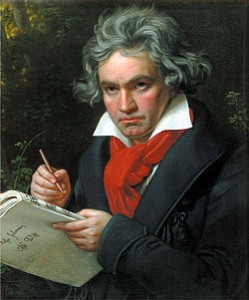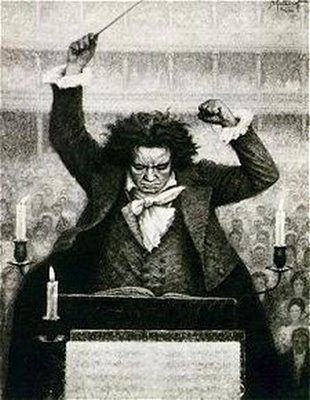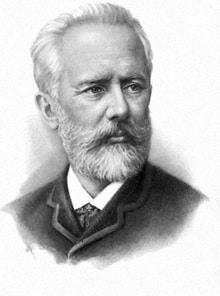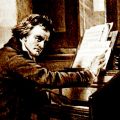Beethoven’s Missa Solemnis
The Solemn Mass was one of Beethoven’s favorite compositions of his own. It was written from 1819 to 1823, around the time of his Symphony No. 9, and was premiered in St. Petersburg on April 7th, 1824. The work was dedicated to Archduke Rudolph of Austria, in light of his new appointment as Archbishop of Olmütz. Rudolph was a friend and student of Beethoven to whom he dedicated a number of compositions. Although most agreed that the Missa Solemnis was a masterpiece, it didn’t reach the popularity Beethoven had hoped it would, it was still not as popular as his symphonies or sonatas. It is a very complex work to perform, and is seldom performed by amateur ensembles, because of the skill it requires in soloists, both vocal and instrumental, and the large number of musicians it is written for. It is the second, more popular mass written by Beethoven.

In this painting Beethoven is actually holding a copy of the score to Missa Solemnis.
The recording I recommend is with the Tonhalle Orchestra in Zurich lead by David Zinman with Fritz Näf as chorusmaster and soloists Luba Orgonasova, Anna Larson, Rainer Trost, and Franz-Josef Selig. The mass in music is a setting of certain sections of the Latin mass to music, and being in the typical format, the Missa Solemnis contains five movements, Kyrie, Gloria, Credo, Sanctus, and Agnus Dei. The opening Kyrie Eleison section of the first movement may be the most conventional portion of the work. It is sullen and powerful, opening with the orchestra lone, leading into a grandiose entrance of the chorus followed by the soloists. Then the Christe section, which has the voices in an almost contrapuntal interaction, moving seriously and leading to a quick close, returning to the Kyrie Eleison form to end the movement. The Gloria opens with a fast-paced exposition of a recurring ostinato that appears throughout the movement, and returns later in the other sections. The strings and brass present the opening notes, being simply an ascending scale in the major from the tonic to dominant, then the voices enter and take over in the theme building. This section is very uplifting, and really speaks the words “Gloria in Excelsis Deo” with its character. The Gloria movement develops into a more lulling section, moving in tempo from “Meno allegro” (less than fast), to “Larghetto” (somewhat slow), and “Poco più allegro” (fast). The movement closes with the Amen section, which is the “Poco più allegro”. It revisits themes from the preceding sections and truly embodies “Gloria”, ending with a thunderous cadence. The Credo movement opens with the Credo in unum Deum section, which is announced by the brass and organ, and the voices, one section at a time, “Credo, credo!” This movement is diverse in tempo, moving from majestic to fast, fast to slow, slow to fast again, and finally to “Grave”, which is slow and sullen. The “Grave” section opens with a mighty statement by the orchestra and chorus, moving into an ornate interaction of the solo voices. The movement ends with a the voices holding a single note, the violins playing subdivided on the dominant, and the lower strings with delicate pizzicatos from dominant, to mediant, to tonic. The next two movements, the Sanctus and Agnus Dei, are opened with deep expression, and the Benedictus section’s violin solo, performed by Primož Novšak, is in the highest range of the instrument, symbolizing the Holy Spirit’s descent to earth. The Sanctus is unique in that it contains an orchestral prelude, leading into the Benedictus. The Agnus Dei is especially moving, with the male voices alone beginning the prayer of “miserere nobis”, meaning “have mercy on us”, which is then taken by the female voices. The final movement ends in a pastoral mode, concluding after repeated pleas of mercy by the voices.
The Missa Solemnis is a large-scale work, and would best be appreciated by a full-time classical fan because of just that. It is very deluxe and rich in reference and musical texture, but may be too deep for less interested listeners. You don’t have to be an exclusive fan of sacred music to enjoy the Missa, but it is a must-hear for the appreciator of music based on Biblical text.




